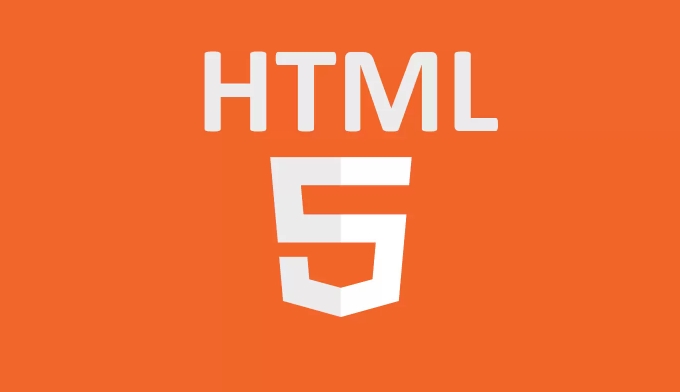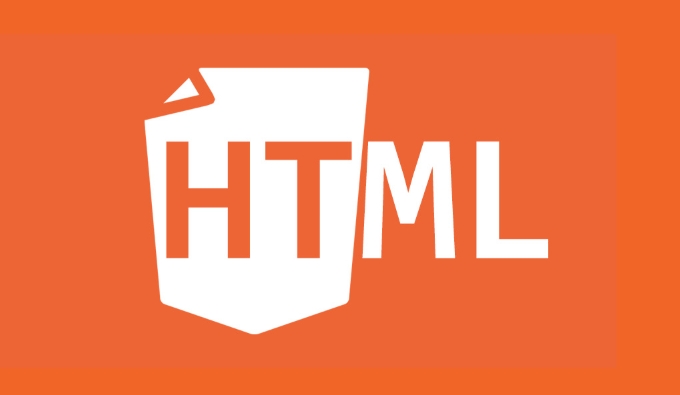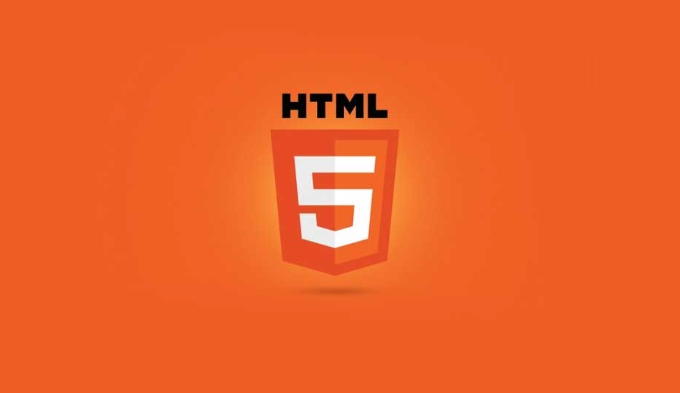To introduce another HTML file into HTML, there are several ways to do it. First, use iframes to embed content, which is suitable for independent modules but is not conducive to SEO and style adaptation; second, use JavaScript to dynamically load HTML fragments, which are flexible and controllable but limited to cross-domain issues; third, use server-side inclusion (SSI), which is conducive to SEO but requires server configuration; fourth, it is automatic merging of HTML through construction tools, which is suitable for large projects but has high learning costs. Just choose the right method according to your needs.

Sometimes you want to introduce an HTML file into another HTML file, such as reusing the header, bottom, or some common modules. But native HTML does not have the "include" function like server-side languages. However, you can still achieve this requirement in several ways.

Embed content using iframe
The easiest and most direct way is to use the <iframe></iframe> tag. You can embed an HTML file into the current page:

<iframe src="header.html" width="100%" style="max-width:90%"></iframe>
This method is suitable for embedded fixed content, such as navigation bars or advertising modules. But the disadvantages are also obvious:
- There may be problems with page scrolling
- SEO unfriendly
- Height and style require additional processing to adapt
So if you just want to quickly display a separate piece of content, you can consider using it, but if you want to reuse structural elements, it is recommended to change to another method.

Dynamically load HTML fragments with JavaScript
If you want to load HTML content more flexibly, you can load asynchronously and insert it into the page using JavaScript:
<div id="header-placeholder"></div>
<script>
fetch('header.html')
.then(response => response.text())
.then(data => {
document.getElementById('header-placeholder').innerHTML = data;
});
</script>The benefits of this approach are:
- You can use the template engine to make more complex logic
- The loading process is controllable (such as adding loading status)
- No dependency on server configuration
But it should be noted that if the website is not deployed on the server (such as opening local files directly), fetch() may fail due to cross-domain restrictions.
Using Server-side Inclusion (SSI)
If you have a server environment, such as Apache or Nginx, you can enable SSI (Server Side Includes) function. This way you can write code similar to the following in the HTML file:
<!--#include virtual="header.html" -->
The premise is that the server supports and SSI is enabled. The configurations of different servers are slightly different, but once configured, they can be used like PHP's include() .
The advantages are obvious:
- Fast loading speed, no JS required
- More SEO-friendly
But the disadvantages are:
- Requires server permissions
- Local debugging is inconvenient
Build tools automatically merge HTML
If you are using modern front-end development processes (such as Webpack, Vite, Gulp, etc.), you will usually use template engines (such as Pug, Handlebars, Nunjucks) to implement componentized HTML development.
For example, in Nunjucks you can write this:
{% include "header.html" %}These templates are automatically merged into a complete HTML file when built. This method is suitable for teamwork and large projects, but the learning cost is slightly higher, making it not suitable for small projects with only one static page.
In general, each method has applicable scenarios. If it is a local small project, it is more convenient to load dynamically with JS; if you pursue performance and SEO after it is launched, you can use SSI or build tools. Basically, just choose the right one.
The above is the detailed content of How to include one HTML file in another?. For more information, please follow other related articles on the PHP Chinese website!

Hot AI Tools

Undress AI Tool
Undress images for free

Undresser.AI Undress
AI-powered app for creating realistic nude photos

AI Clothes Remover
Online AI tool for removing clothes from photos.

Clothoff.io
AI clothes remover

Video Face Swap
Swap faces in any video effortlessly with our completely free AI face swap tool!

Hot Article

Hot Tools

Notepad++7.3.1
Easy-to-use and free code editor

SublimeText3 Chinese version
Chinese version, very easy to use

Zend Studio 13.0.1
Powerful PHP integrated development environment

Dreamweaver CS6
Visual web development tools

SublimeText3 Mac version
God-level code editing software (SublimeText3)

Hot Topics
 How do I stay up-to-date with the latest HTML standards and best practices?
Jun 20, 2025 am 08:33 AM
How do I stay up-to-date with the latest HTML standards and best practices?
Jun 20, 2025 am 08:33 AM
The key to keep up with HTML standards and best practices is to do it intentionally rather than follow it blindly. First, follow the summary or update logs of official sources such as WHATWG and W3C, understand new tags (such as) and attributes, and use them as references to solve difficult problems; second, subscribe to trusted web development newsletters and blogs, spend 10-15 minutes a week to browse updates, focus on actual use cases rather than just collecting articles; second, use developer tools and linters such as HTMLHint to optimize the code structure through instant feedback; finally, interact with the developer community, share experiences and learn other people's practical skills, so as to continuously improve HTML skills.
 How do I use the element to represent the main content of a document?
Jun 19, 2025 pm 11:09 PM
How do I use the element to represent the main content of a document?
Jun 19, 2025 pm 11:09 PM
The reason for using tags is to improve the semantic structure and accessibility of web pages, make it easier for screen readers and search engines to understand page content, and allow users to quickly jump to core content. Here are the key points: 1. Each page should contain only one element; 2. It should not include content that is repeated across pages (such as sidebars or footers); 3. It can be used in conjunction with ARIA properties to enhance accessibility. Usually located after and before, it is used to wrap unique page content, such as articles, forms or product details, and should be avoided in, or in; to improve accessibility, aria-labeledby or aria-label can be used to clearly identify parts.
 How do I minimize the size of HTML files?
Jun 24, 2025 am 12:53 AM
How do I minimize the size of HTML files?
Jun 24, 2025 am 12:53 AM
To reduce the size of HTML files, you need to clean up redundant code, compress content, and optimize structure. 1. Delete unused tags, comments and extra blanks to reduce volume; 2. Move inline CSS and JavaScript to external files and merge multiple scripts or style blocks; 3. Simplify label syntax without affecting parsing, such as omitting optional closed tags or using short attributes; 4. After cleaning, enable server-side compression technologies such as Gzip or Brotli to further reduce the transmission volume. These steps can significantly improve page loading performance without sacrificing functionality.
 How do I create a basic HTML document?
Jun 19, 2025 pm 11:01 PM
How do I create a basic HTML document?
Jun 19, 2025 pm 11:01 PM
To create a basic HTML document, you first need to understand its basic structure and write code in a standard format. 1. Use the declaration document type at the beginning; 2. Use the tag to wrap the entire content; 3. Include and two main parts in it, which are used to store metadata such as titles, style sheet links, etc., and include user-visible content such as titles, paragraphs, pictures and links; 4. Save the file in .html format and open the viewing effect in the browser; 5. Then you can gradually add more elements to enrich the page content. Follow these steps to quickly build a basic web page.
 How do I create checkboxes in HTML using the element?
Jun 19, 2025 pm 11:41 PM
How do I create checkboxes in HTML using the element?
Jun 19, 2025 pm 11:41 PM
To create an HTML checkbox, use the type attribute to set the element of the checkbox. 1. The basic structure includes id, name and label tags to ensure that clicking text can switch options; 2. Multiple related check boxes should use the same name but different values, and wrap them with fieldset to improve accessibility; 3. Hide native controls when customizing styles and use CSS to design alternative elements while maintaining the complete functions; 4. Ensure availability, pair labels, support keyboard navigation, and avoid relying on only visual prompts. The above steps can help developers correctly implement checkbox components that have both functional and aesthetics.
 How has HTML evolved over time, and what are the key milestones in its history?
Jun 24, 2025 am 12:54 AM
How has HTML evolved over time, and what are the key milestones in its history?
Jun 24, 2025 am 12:54 AM
HTMLhasevolvedsignificantlysinceitscreationtomeetthegrowingdemandsofwebdevelopersandusers.Initiallyasimplemarkuplanguageforsharingdocuments,ithasundergonemajorupdates,includingHTML2.0,whichintroducedforms;HTML3.x,whichaddedvisualenhancementsandlayout
 How do I use the element to represent the footer of a document or section?
Jun 25, 2025 am 12:57 AM
How do I use the element to represent the footer of a document or section?
Jun 25, 2025 am 12:57 AM
It is a semantic tag used in HTML5 to define the bottom of the page or content block, usually including copyright information, contact information or navigation links; it can be placed at the bottom of the page or nested in, etc. tags as the end of the block; when using it, you should pay attention to avoid repeated abuse and irrelevant content.
 How do I use the tabindex attribute to control the tab order of elements?
Jun 24, 2025 am 12:56 AM
How do I use the tabindex attribute to control the tab order of elements?
Jun 24, 2025 am 12:56 AM
ThetabindexattributecontrolshowelementsreceivefocusviatheTabkey,withthreemainvalues:tabindex="0"addsanelementtothenaturaltaborder,tabindex="-1"allowsprogrammaticfocusonly,andtabindex="n"(positivenumber)setsacustomtabbing






